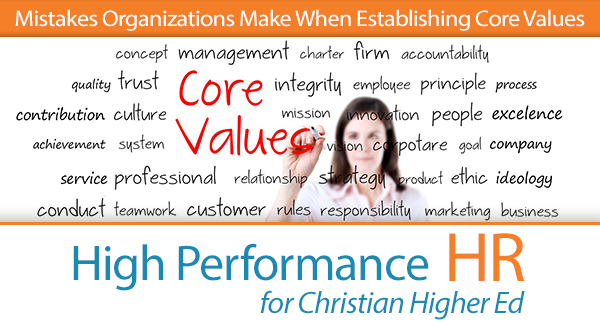
Mission, Vision, Values….Your Voice
Mission, Vision and Values: Your Voice
As a college student or recent graduate, you’re probably giving your future career a great deal of thought. And I’m guessing you’re interested in a career you want to enjoy. You’ll want to like what do you do because you’re going to do it a lot! According to statistics from the research firm Organization for Economic Co-Operation and Development, the average American works 1,788 hours per year. Over 40 years, that could add up to over 71,000 hours! Take a moment to let that staggering number sink in. You may spend more time working than sleeping, eating or participating in your favorite recreational activities throughout your life!
While you want to enjoy what you do, I’m also guessing you want to enjoy the company you work for, as you might be there for a very long time. Longevity for employees is now increasing. Recent statistics show that employees stay at their jobs an average of 4.6 years. This is why it’s so important to know exactly what you want to do before you start doing it. Beginning a career in a field you love and sticking with it will make all the difference in your future. But in order to enjoy a career you love, you need something vitally important: your voice.
No, I’m not referring to the popular singing show on TV. I’m referring to a combination of your personal mission, vision and values. All successful companies must have a voice. A voice shapes the culture of an organization and serves as a guide to employees and management. Organizations with a well thought-out voice have direction, purpose and achievement in the workplace. These organizations know where they want to be (the big picture) and do the appropriate things (the details) to get there. Every step of the way, their employees enthusiastically project that voice to customers, vendors and their local communities. Without a voice, high-powered organizations will find it impossible to align their goals and objectives to create success.
So just what does a personal mission, vision and values statement entail? Let’s dig in a bit.
A mission statement for a company is a concise, meaningful sentence or two that represents the purpose of the organization. Mission statements are often action-based, explaining how the company’s objectives serve both employees and customers. Here are a few examples:
LinkedIn: “To connect the world’s professionals to make them more productive and successful.”
Amazon: “To be Earth’s most customer-centric company, where customers can find and discover anything they might want to buy online, and endeavors to offer its customers the lowest possible prices.”
Nike: “Bring inspiration and innovation to every athlete in the world.”
A personal mission statement is similar. It defines who you are as a person and identifies your purpose, whether that’s on the job or simply in life. It explains where you see yourself in the future, how you plan to pursue that purpose and why it matters so much to you. Like an organizational mission statement, it should be clear and concise – a soundbite or quick elevator pitch, if you will. Here is a sample personal mission statement:
“To use my writing skills to inspire and educate others around the world to make a change.”
An organizational vision differs a bit from a mission statement. A vision statement is a company’s “one day” statement, or the goal a company strives to embody or see in its consumers. A company’s vision statement is essentially the world the company envisions for the future, while the mission statement defines the strategy for reaching that vision. Here’s an example:
Tesla: “To create the most compelling car company of the 21st century by driving the world’s transition to electric vehicles.”
Lastly, an organizational value statement defines what is important to a company and its employees and discusses the company’s most essential values. Here is an example:
“We believe food has the power to change the world. We do it by being real.”
Similarly, a personal value statement defines what values are most important to YOU. Here is an example:
“To be a respectable employee, friend and member of the community and make a positive impact on others by being honest, fair and reliable.”
These three important aspects—your mission, vision and values – all create your voice. In essence, you are sharing with the world WHO you are, WHAT you believe and WHERE you want to go. No two people share the exact same voice. Your voice is unique only to YOU. By fine tuning this voice, you will impress future employers when they see you know who you are and what you want. If this sounds intimidating, fret not. Begin by grabbing a piece of scratch paper and writing out your thoughts. You might begin by scribbling a few adjectives that describe you best. Then think about what you value most. Is it integrity? Reliability? Honesty? Lastly, what is it you really want, and how do you plan to get there? Where do you see yourself in five years? Ten years? Don’t worry if you don’t have it all figured out. You are young, and sometimes plans change. But by perfecting your unique voice, you will set yourself apart from the rest.
Once you come up with your mission, vision and values statement, start reciting it to your friends and loved ones. Say it with confidence and a smile. By the time you land an interview at your desired company, you’ll have it down pat!
By being clear about who you are, what you believe and where you want to go, you’ll be sure to stay on track and pursue the career of your dreams!
For more on your voice, check out College to Career today!





